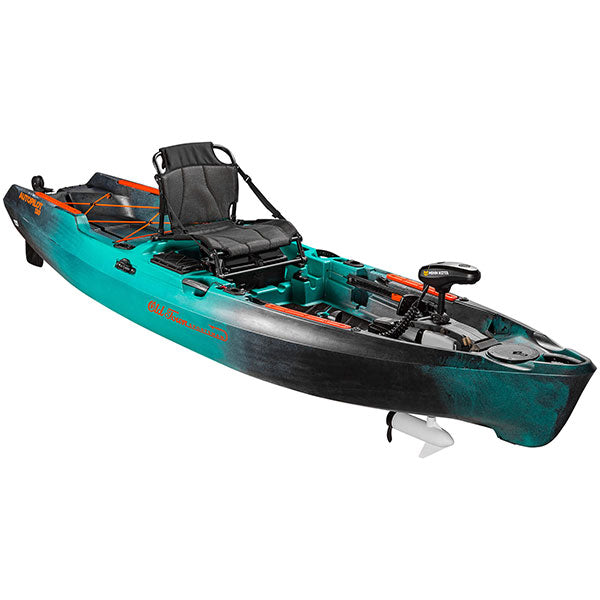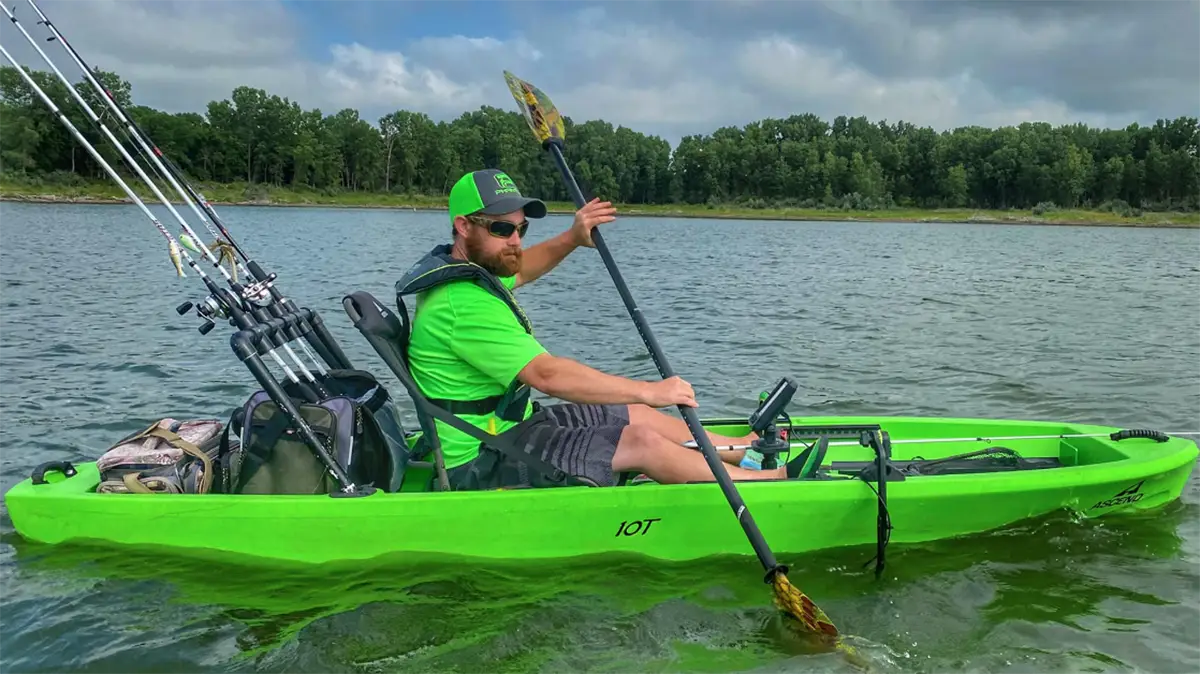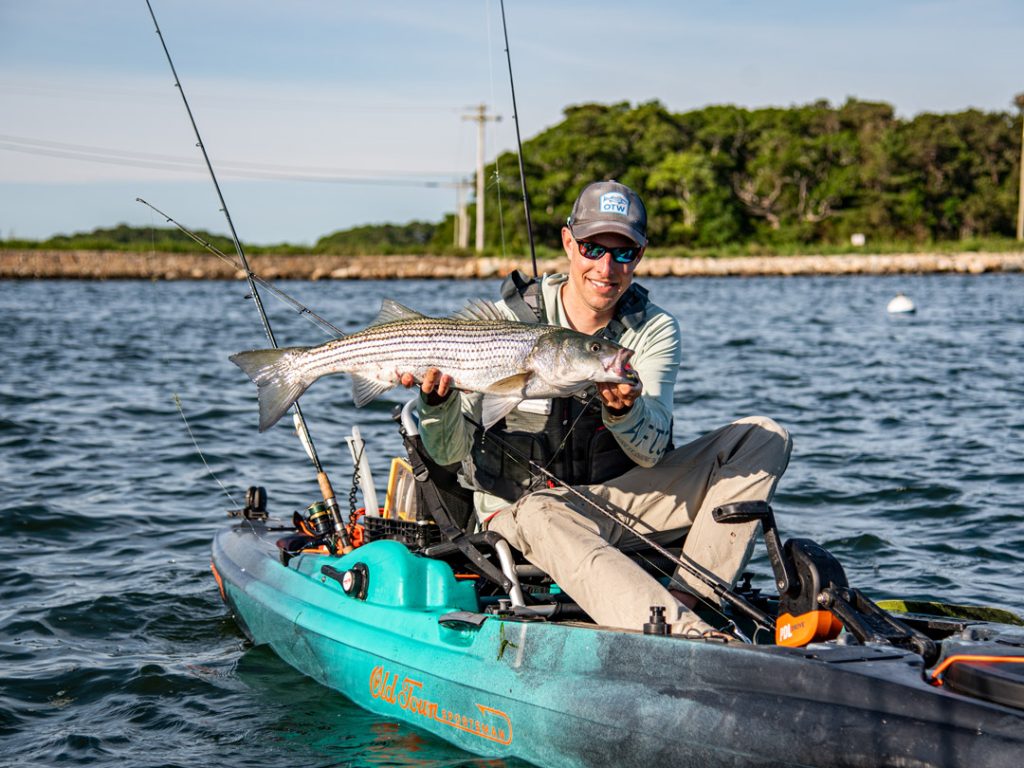To launch a fishing kayak, gently place it in shallow water and stabilize it before boarding. Store your kayak by suspending it horizontally or resting it on its side.
Venturing into the tranquil pursuit of kayak fishing begins with mastering the art of kayak launching and secure storage. Launching your aquatic companion requires finesse; approach shallow waters, ensure the kayak is steady, and enter with care to avoid tipping.
Storage demands thoughtfulness; protect your kayak’s shape and longevity by suspending it away from ground moisture and direct sunlight or resting it on foam blocks to prevent hull distortion. This careful balance of preparation and preservation is crucial for both novice and experienced anglers aiming to maintain their kayak’s condition for endless days of serene fishing adventures. Prioritize these practices to keep your kayak adventure-ready at a moment’s notice.
Gear Up For The Launch
Embarking on a fishing adventure with your kayak involves meticulous preparation. Here’s how to ensure you’re fully prepared for an unforgettable experience on the water. Proper gear is crucial for a safe and enjoyable trip.
Selecting The Right Kayak
Choosing a kayak that suits your fishing style is fundamental. Consider the following:
- Stability for casting and reeling in fish
- Storage capacity to hold all your gear
- A comfortable seat for long hours on the water
Personal Floatation Devices
A personal floatation device (PFD) is a must-have. Ensure it fits well and meets these criteria:
| Size | Comfort | Buoyancy |
|---|---|---|
| Match to your body weight | Easy to move in | Ensures you stay afloat |
Essential Paddling Gear
To paddle effectively, you need the right equipment:
- Kayak paddle – right size and weight
- Dry bags – keep belongings safe
- Paddle leash – secure your paddle
Protective Clothing For The Trip
Dress for the weather and water conditions:
- Quick-dry fabrics to stay comfortable
- Sun protection – hat, sunglasses, and UPF clothing
- Waterproof footwear for wet environments
Preparation Steps Before Hitting The Water
Before venturing into the tranquil waters with your fishing kayak, a thorough preparation is vital. Proper preparation ensures a safe, enjoyable, and successful kayaking experience. Let’s go through the essential steps to get you water-ready.
Inspection Of The Kayak
Begin with a close examination of your kayak. Check for any damage that could impact safety or performance. Look for cracks, holes, or general wear and tear. Ensure the hull is intact and the rudder or skeg moves freely. Confirm that seats and footpegs are secure and comfortable.
Loading Supplies And Equipment
- Pack your life jacket – Safety comes first, so include a properly fitting personal flotation device.
- Gather your fishing gear – Organize rods, reels, bait, and tackle. Keep items accessible but secure.
- Carry water and snacks – Stay hydrated and energized. Pack enough for the duration of your trip.
- Include a first-aid kit – Prepare for minor injuries or emergencies with a well-stocked kit.
- Storage – Use waterproof containers or bags to protect your belongings from getting wet.
Weather And Water Conditions Analysis
Understanding weather and water conditions is crucial for a smooth kayaking adventure. Check the forecast for wind, rain, and temperature. Know the tides and currents to plan your route and timing. Respect local advisories and adjust plans accordingly for a safe outing. Remain vigilant and flexible to change your itinerary if conditions worsen.
Launching Your Kayak
Setting off from the shore in your fishing kayak is the first step to a thrilling aquatic adventure. To ensure a successful departure, you need to master a few skills. Let’s dive into the essential techniques for a smooth kayak launch.
Finding The Perfect Spot
- Look for calm water: Gentle waves make entering easier.
- Find a stable area: A solid foundation helps with balance.
- Avoid obstacles: Clear surroundings prevent damage and injury.
The Art Of Smooth Entering
Gracefully entering your kayak is key. Place your paddle across the kayak for support. Sit down in the seat with care. Keep your movements deliberate and controlled.
Balancing Techniques
- Center your weight: Keep it even to avoid tipping.
- Bend your knees slightly: This stance increases stability.
- Stay low: A lower center of gravity aids balance.
Push-off Strategies
Once seated, you’re ready to embark. Use your hands or paddle to gently push away from shore. Avoid sudden movements to maintain balance. Steer clear of rocks or shallow areas to prevent kayak damage.

Credit: ecofishingshop.com
Paddling Basics And Safety
Launching a fishing kayak flows into adventure. But first, master the paddling basics. Safety always comes first. This section dives into essential skills for a smooth kayak experience. Grab your paddle, and let’s set sail on knowledge!
Paddle Holding Techniques
Proper grip and body posture ensure control. Here are steps to hold a paddle:
- Face the concave part of the blades towards you. This is your power face.
- Keep hands shoulder-width apart. This balance offers optimal control.
- Align knuckles with the blade’s angle for a smooth wrist alignment.
Experiment with low-angle and high-angle paddling techniques. Both are effective but serve different conditions.
Navigating Through Different Waters
Understanding various water types is critical. For calm lakes, stay near the shore. Flowing rivers need more attention to currents. Oceans have tides and waves to consider. Here’s a quick guide:
| Water Type | Tips |
|---|---|
| Calm Lakes | Watch for weather changes. Stay visible. |
| Flowing Rivers | Paddle into the current for maneuverability. |
| Oceans | Understand tides. Learn wave patterns. |
Safety Maneuvers To Know
Master these key safety maneuvers:
- Capsize recovery: Learn to re-enter your kayak from the water.
- Buddy rescue: Practice assisting a capsized companion.
- Wet exit: Safely exit an overturned kayak.
Wearing a life jacket is non-negotiable. Keep a whistle and a first-aid kit accessible. Always have a float plan with someone on shore. Safety gear and knowledge mean adventure without compromise.
Storing Your Kayak Post-adventure
Your fishing kayak brought you joy on the water. Now ensure it stays in top condition for many trips to come. Proper storage prevents damage and wear-out. Explore how to pamper your vessel after a fulfilling day of fishing.
Cleaning Your Kayak Properly
Clean your kayak before storing it. Rinse your kayak with freshwater, especially after saltwater use. Check all nooks for dirt. Use mild soap for tough grime. A clean kayak is ready for rest.
Dry Storage Vs. Wet Storage Options
Keep your kayak dry when not in use. Dry storage prevents hull damage and mold growth. Indoor options like garages or sheds are best. Outdoor covers work too, but keep the kayak off the ground. Avoid direct sunlight.
| Storage Type | Pros | Cons |
|---|---|---|
| Dry Storage | Prevents mold, extends lifespan | Needs space indoors |
| Wet Storage | Ready for use | Risk of damage, not ideal |
Avoiding Common Storage Mistakes
- Don’t hang the kayak by its handles. It can damage the shape.
- Do not leave it outside without cover. Sun and rain harm kayaks.
- Avoid tight straps for long periods. They create pressure points.
- Keep weight off the kayak. Stored items can dent the hull.

Credit: www.onthewater.com
Maintaining Your Kayak
Maintaining your kayak ensures it remains a reliable companion on numerous angling adventures. Regular upkeep extends its life and performance. Let’s explore essential maintenance practices that keep your kayak in top shape.
Regular Maintenance Checks
To prevent unexpected issues, perform regular maintenance checks. Here’s what to keep an eye on:
- Hull condition – Inspect for scratches or dents.
- Hardware – Check if screws or bolts are tight.
- Storage compartments – Ensure they are dry and clean.
- Rudder and pedals – Test for proper function.
Repair Tips For Common Issues
Even with care, kayaks can develop issues. Here are tips to repair common problems:
| Issue | Solution |
|---|---|
| Small holes or cracks | Use a kayak repair kit or UV-resistant marine epoxy. |
| Loose fittings | Tighten with the appropriate tools or replace if necessary. |
| Worn out padding | Replace with new padding specific to your kayak model. |
Longevity Practices For Kayaks
Maximize your kayak’s lifespan with these longevity practices:
- Clean after each use, especially when used in saltwater.
- Store in a cool, dry place away from direct sunlight.
- Protect with kayak covers to guard against dust and UV damage.
- Transport properly to avoid unnecessary stress on the structure.
Transporting Your Fishing Kayak
Transporting your fishing kayak calls for care and the right techniques. Whether you’re heading to a serene lake or a distant river, getting your kayak there in top condition is essential. Discover methods to carry, options for rooftop mounting, and tips for securing your kayak to avoid any mishaps on the road. Let’s make sure your fishing adventure starts and ends with your gear in perfect shape.
Effective Carrying Techniques
Carrying a fishing kayak can be tricky, but with proper techniques, it becomes easy. Always lift with your legs, not your back. A two-person carry is best for longer kayaks. Use kayak carts for solo transport. Place the kayak on its side for grip ease. Check out these steps:
- Team Lift: With someone, grab each kayak end.
- Solo Carry: Use the kayak’s central yoke.
- Kayak Carts: Place stern on cart, strap it, and go!
Roof Racks And Trailers
For vehicles, roof racks and trailers are perfect for kayak transport. Check compatibility with your car model. Padded bars protect the kayak’s hull. Straps keep the kayak in place. Trailers are good for multiple kayaks. They also reduce lifting strain.
| Transport Type | Benefits |
|---|---|
| Roof Racks | Easy to install, ideal for singles |
| Trailers | Carry multiple kayaks, easy loading |
Securing Your Kayak For Transportation
Securing your kayak ensures it stays put. Use cam straps, not ratchet straps which may damage your kayak. Place the straps over the kayak’s hull. Go around the roof rack bars. The Bow and Stern lines add extra safety. Follow these steps:
- Place Straps: Two straps across the kayak’s body.
- Tighten Straps: Pull to snug, not overly tight.
- Secure Lines: Connect bow and stern to vehicle’s front and back.
- Check Stability: Give a gentle shake to test.
Kayak Fishing Tips
Welcome to the ultimate guide on kayak fishing. Mastering the art of launching and storing your fishing kayak will open up a world of aquatic adventures. Here, find invaluable insights for your next trip.
Quiet Approach In Fishing Spots
A successful kayak fisher knows the importance of stealth. Silent movement is key to not spook the fish. Gliding quietly into your chosen spot can be the difference between a good day and a great day on the water.
- Paddle gently, minimizing splash and noise.
- Avoid hitting the kayak with the paddle.
- Approach fishing spots against the wind for better control.
- Use the kayak’s rudder to steer quietly if available.
Rod And Reel Setup
Choosing the right rod and reel setup affects your fishing experience. Balance and comfort are essential for kayaking and fishing simultaneously. Shorter rods often offer better handling in the limited space of a kayak.
| Rod Type | Benefits |
|---|---|
| Spinning Rod | Easier casting, good for beginners |
| Casting Rod | Better accuracy, suits experienced anglers |
Secure your setup to avoid losing it overboard. Use rod holders and leash your gear when possible. Always check all equipment before launching.
Lure Selection
Selecting the right lure can greatly improve your catch rate. Match the hatch by using lures that resemble the local prey in the area.
- Understand the feeding habits of the target fish.
- Consider water conditions like clarity and temperature.
- Use bright lures in murky water, and natural colors in clear water.
Vary your techniques until you discover what the fish are responding to. Adaptability is the angler’s strength. Enjoy the process and learn from each cast.

Credit: www.wired2fish.com
Frequently Asked Questions Of How To Launch And Store A Fishing Kayak
What Is The Best Way To Launch A Fishing Kayak?
Launching a fishing kayak involves moving it into the water without causing damage to the hull or injury to yourself. The best way is to carry it or slide it into shallow water bow first. Once the kayak is afloat, stabilize it with your paddle against the bottom, and step in carefully, starting with one foot before lowering yourself into the seat.
How Do You Properly Store A Fishing Kayak?
Proper storage of a fishing kayak includes keeping it out of direct sunlight, away from harsh weather, and off the ground. Indoors is ideal, using wall racks or hanging systems that support its weight evenly. If storing outside, use a cover and place it on its side or upside down on padded racks to prevent hull deformation.
Can You Transport A Fishing Kayak Alone?
Yes, you can transport a fishing kayak alone by using a kayak cart. The cart fits under the kayak’s hull and has wheels, allowing you to pull or push the kayak with ease. Alternatively, roof racks and assistive lifting devices can help secure the kayak to the top of your vehicle for transportation.
What Safety Measures Should I Take When Launching A Kayak?
Always wear a personal flotation device (PFD) and check local weather conditions before launching your kayak. Ensure that the launch area is free of obstacles and hazards. Have a paddle leash and a bilge pump or sponge on hand, and inform someone about your trip details, including destination and expected return time.
Conclusion
Launching and storing your fishing kayak doesn’t have to be daunting. With the right technique, it can be seamless and safe. Remember to prioritize secure storage to protect your kayak from damage. Embrace these tips and enjoy serene moments on the water, confident in the knowledge that your kayak is well cared for, poised for your next aquatic adventure.

